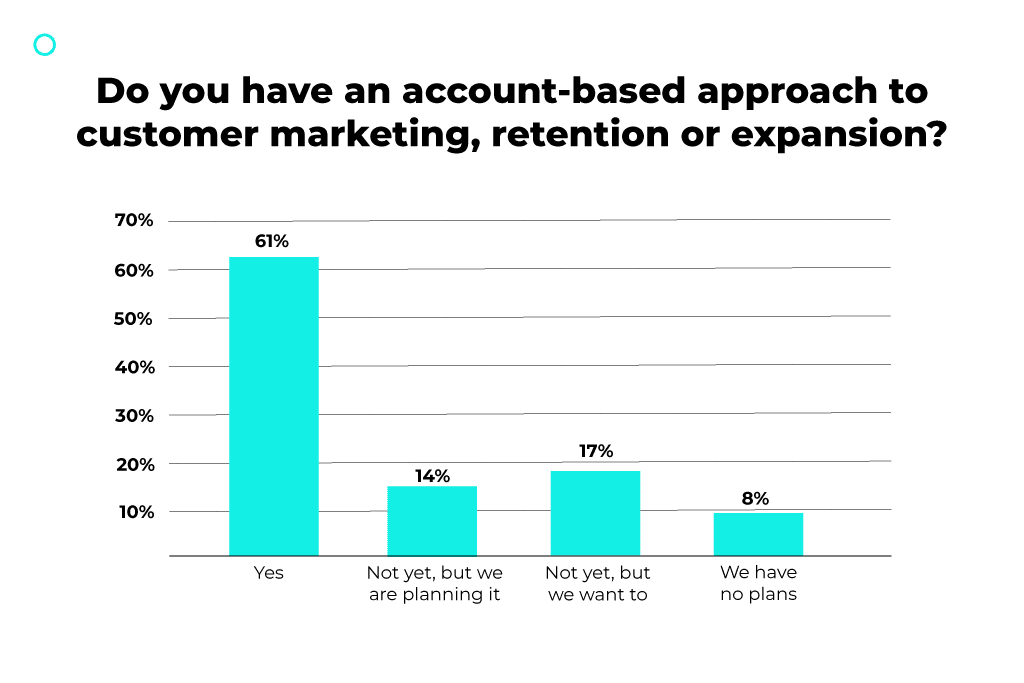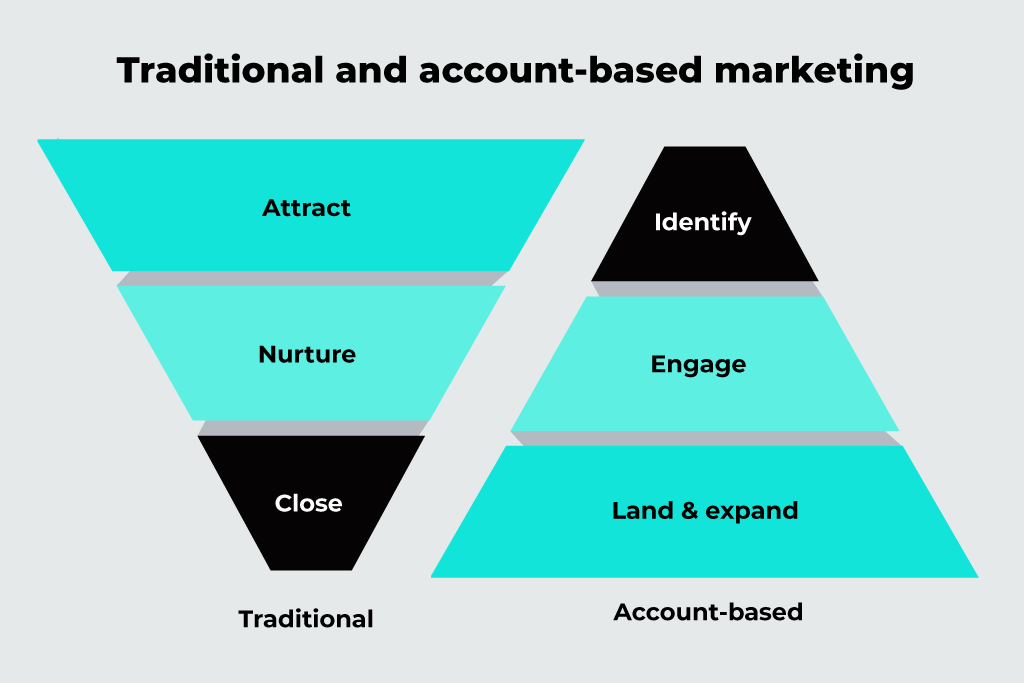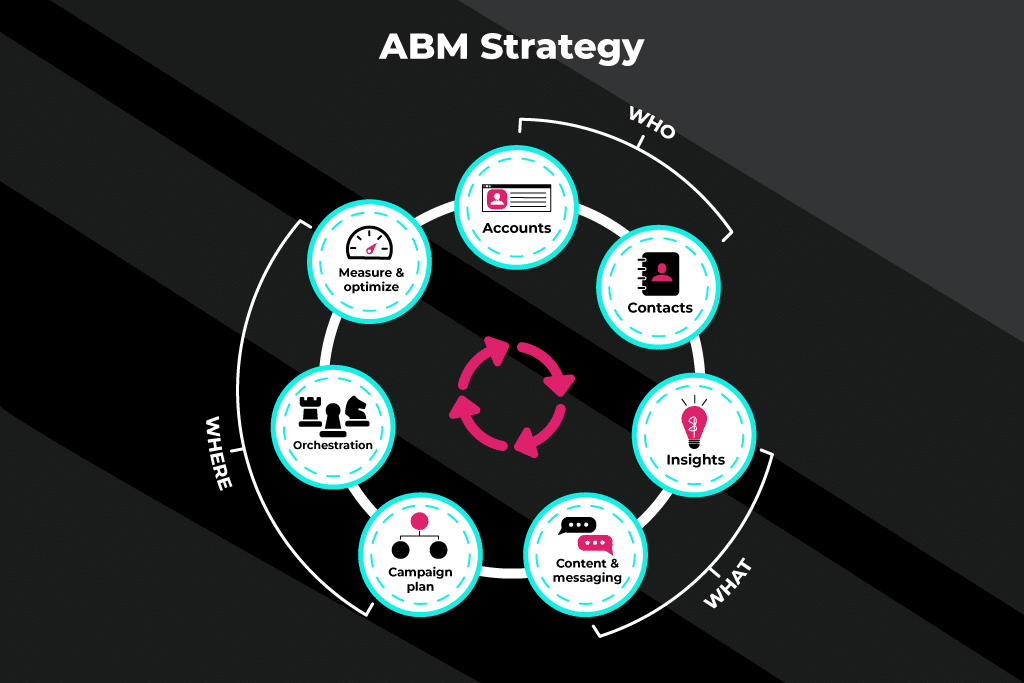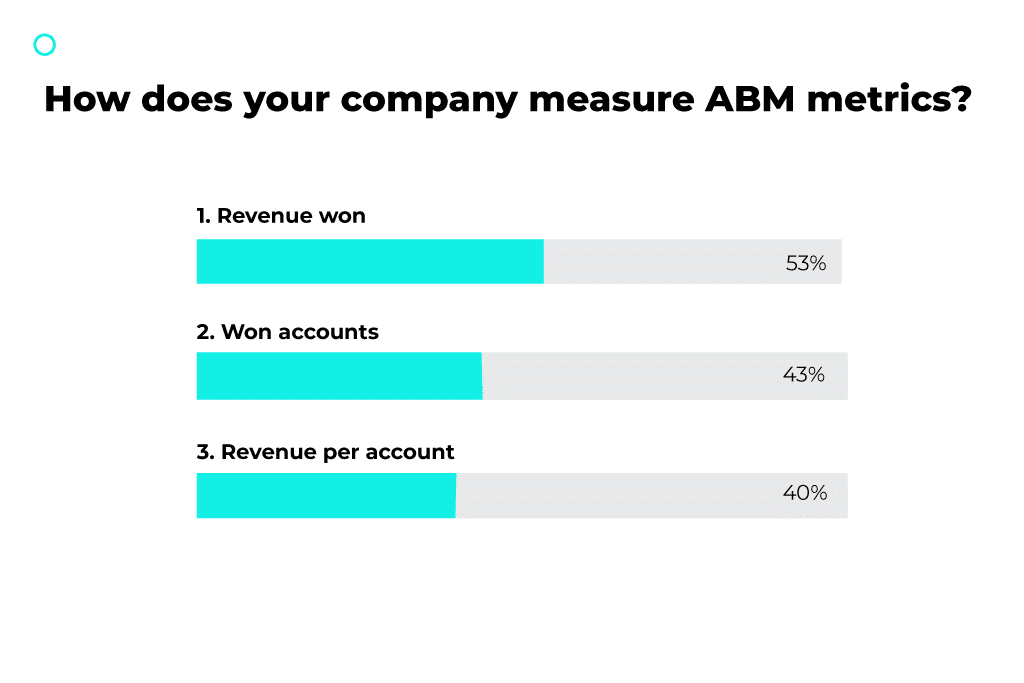Account-based marketing strategy for SaaS companies

Done right, Account-based Marketing (ABM) has the potential to generate demand, and then some.
For B2B SaaS companies, having a robust ABM strategy is key to growth. The best ABM campaigns will combine both inbound marketing strategies and outbound-driven marketing methods and should work seamlessly alongside any demand generation processes already in operation. So, let’s get down to business.

Image Source
Today we’re going to run you through the key components of a SaaS ABM strategy so that you can start generating more demand than ever before.
We’ll be covering…
What is an Account-based Marketing strategy?
The benefits of ABM compared to traditional marketing
How to execute an effective ABM marketing campaign for SaaS
Transform your marketing campaigns with ABM
What is an Account-based Marketing strategy?
Account-based Marketing (ABM) is a growth strategy that combines marketing and sales to generate buyer experiences specifically targeted towards high-value accounts.
These high-value accounts are identified, and their key stakeholders targeted and then marketed directly through multi-channel, personalized marketing methods.
Because of the very high level of precision personalization required as part of an ABM campaign, the process requires extensive research, preparation, and collaboration across sales teams and marketing departments.
How does ABM work?

Image Source
ABM takes the opposite approach to traditional marketing by flipping the sales and marketing funnel upside down. ABM first identifies an ideal customer for a company’s products and services, even if they’re not yet displaying active purchase intent.
The strategy then works by nurturing these high-value prospects and guiding them through the sales cycle with highly targeted, personalized marketing content and support.
In practical terms that means less email blasting and more individual nurturing. Instead of reaching out to the masses and hoping someone will “opt-in”, ABM carefully selects those stakeholders who are the most likely to be the perfect fit for your products.
Once those high-value prospects have been identified, all that’s left is to engage your leads with meaningful, personalized, actionable content that provides value and incentivizes action.
Now it’s time to nurture your prospects down the sales funnel so that you can start to boost your conversion rate. And if you’re lucky, you’ll get a glowing referral at the end of it.
Are you looking to scale up your SaaS business? Our accelerate agency eBook is full of actionable advice. Sign up to access this free resource now.
The benefits of ABM compared to traditional marketing

Image Source

ABM offers some great benefits beyond those which can be achieved via traditional marketing methods. Benefits include streamlined acquisitions, personalization, faster sales cycles, and improved sales and marketing alignment.
Let’s take a look at these benefits in more detail below.
Streamlined acquisitions
ABM cuts to the chase.
Instead of wasting time on dead-end leads, your sales and marketing teams will be pouring all of their time and attention into high-quality accounts that will drive the most revenue. ABM takes a narrow focus that serves to optimize your most valuable resources.
You’ll be working directly towards developing content that will target sales from these key accounts. That means you’ll be more likely to land the right leads. It’s the old adage in action: quality over quantity.
Opportunities for personalization
ABM’s narrow focus creates far more opportunities for personalization. Instead of blanketed messaging, your marketing team will be set to work carrying out personalized messaging campaigns for core prospects.
You’ll have the time to create truly relevant and engaging content that sells while actively communicating and building relationships with high-quality leads.
Shorter sales cycles
By nurturing your core prospects according to their individualized needs, you’ll be able to shorten your sales cycle and expedite those final purchase decisions. You won’t have any unqualified prospects to wade through, and your most valuable leads will be given the quality support they need to build trust in your company and reach that purchase decision.
Sales and marketing alignment
ABM bridges the gap between sales and marketing. Often these departments can end up working in silos. But for ABM to be carried out successfully, it’s imperative that both departments communicate and collaborate under a common purpose and strategy.
With sales and marketing aligned, you’ll be able to control spending and manage time more effectively, reduce resource wastage, and generate more consistent marketing outputs. The kind that serves to target, nurture, acquire, and grow valuable accounts at source.
Needless to say, that’s set to have a seriously positive impact on your ROI.
How to execute an effective ABM marketing campaign for SaaS
The moment we’ve all been waiting for has finally arrived.
If you’re thinking of developing or rejuvenating your own account-based marketing strategies for SaaS, then you’ll want to make sure that you’re putting in the appropriate preparatory measures.
You might be wondering what makes for an effective ABM campaign.
Below, we’ve outlined a go-to strategy that SaaS businesses can call on for ABM success.
For an even more extensive look at SaaS marketing strategy and 12 proven tactics for success, check out accelerate agency’s very own resource.
This five-step process will help you identify those high-value accounts and personas, create custom content, build, and finally execute your ABM campaign.
So, let’s get started!

Image Source
Step 1: Identify & define your accounts
The first step is to identify and define your target audience. This is less about defining individual buyers and more about identifying those organizations that are most likely to respond to your product and service offerings.
Use qualitative and quantitative methods to identify those clients that bring in the most Monthly Recurring Revenue (MMR):
- Gather information and insights from frontline employees
- Gather data to back up these insights. You can:
- Purchase from a data provider
- Compile your own from surveys and feedback forms
Next, identify the key characteristics of these organizations.
What industries bring in the most MMR? Are they small businesses, SMBs, or larger enterprise companies? Where are these companies located and what are their profit margins like? You’ll want to target the accounts that are most likely to generate long-term revenue.
Now it’s time to build your targeted accounts list. Collate all the key information for your chosen prospects, including the name of a relevant company employee, email address, and the company name.
Step 2: Identify customer personas for key stakeholders
Next, identify the key personas and stakeholders within your target market. SaaS buyer personas are different from consumer personas. B2B organizations need to market to three core types of stakeholders.
These are:
- The everyday user of your software
- The manager
- The decision-maker
Develop personas based on these three categories. Think about what they need and want. What are their everyday frustrations and roadblocks? How can you meet this head-on?
Now segment your accounts list based on these personas. This is what’s going to help you target each lead with separate, highly personalized campaigns.
Step 3: Create custom content
It’s time to start generating that content. This is your opportunity to speak directly to your prospects about their specific pain points and how your software will help them.
Use engaging language that appeals to each company, and make sure that you’re always speaking specifically to the individual stakeholder through custom resources, whitepapers, imagery, and one-to-one communication.
Step 4: Build your campaign
You’ve done the research, identified your key stakeholders, produced some amazing content, and now it’s time to build your campaign.
First thing’s first, decide which channels are going to be best for your campaigns. You’ll want a multi-channel approach that combines social platforms like LinkedIn, Instagram, and Facebook, with Google Ads, blog posts, and more. Now, refer back to your segmented account lists and assign individual campaigns accordingly.
Step 5: Execute and monitor your campaign
It’s time to launch. Send out those targeted marketing campaigns and start nurturing your prospects through the sales cycle. Don’t go in too strong. Remember, the key to ABM is to provide quality, not quantity. So keep the remarketing efforts on the mellow side.
As your campaign matures, make sure that you’re monitoring it regularly and evaluating its effectiveness. Use targeted KPIs and metrics to determine where your campaign is succeeding and where improvements might need to be made.
 Image Source
Image Source
Transform your marketing campaigns with ABM
Account-based marketing is a fantastic way to expedite B2B leads with targeted, personalized content that aligns sales and marketing teams under a united goal. With ABM, SaaS companies can save time, money, and generate higher quality, committed leads. What’s not to like?
Ready to accelerate your growth with our specialist SaaS SEO agency?
Book a Consultation


